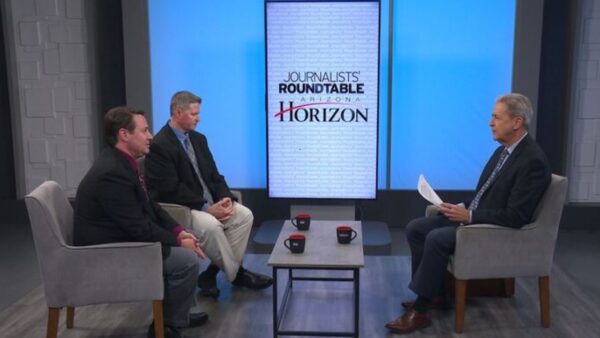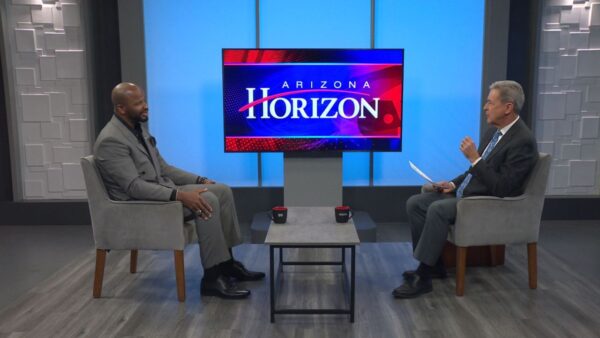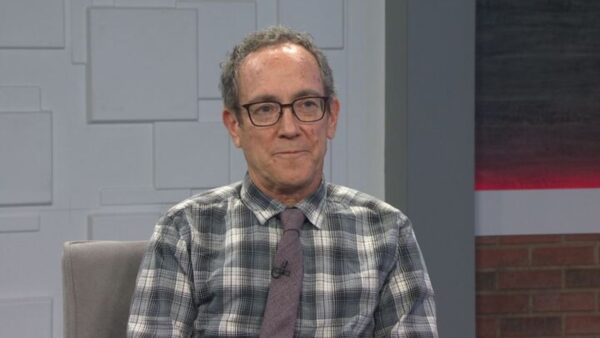The Arizona SciTech Festival has over 250 events statewide. One upcoming event takes a look at the science of baseball. Arizona State University Psychology Professor Michael McBeath will talk about the SciTech event, “Spring Training Festival: The Mad Science of Baseball.”
Ted Simons: What makes a curve ball curve? What makes a spitball so difficult to hit? Those are questions that science can help answer, and the science of baseball will be featured this weekend at the Scottsdale Civic Center Mall as one of the more than 250 events making up the Arizona Sci-Tech festival. In our continuing coverage of innovation and technology issues, we talk about the science of baseball with ASU psychology professor Michael McBeath. Good to see you here. Thanks for joining us.
Michael McBeath: Great to be here.
Ted Simons: You're a psychology professor, but we're talking science. What gives?
Michael McBeath: I'm in psychology and an engineering professor, but we like to study baseball because it's a metaphor for lots of activities that people do in everyday life and the science of baseball is a case where we can teach people science and doing something that's really a fun activity. So we like to -- like the overlap of that and the Sci-Tech event is nice because people can have fun judging fast balls and seeing why balls curve and there's a series of speakers we've invited from around the country that are experts in the science of baseball that will be giving talks so people can learn about science in a fun context.
Ted Simons: And for those of us who are baseball fans, it sounds fascinating, to know why certain things happen. Let's talk why -- let's talk about the sweet spot on an aluminum bat. Is there a sweet spot? Seems like there is.
Michael McBeath: There is a sweet spot and one of the speakers we have, Alan Nathan, coming from Illinois, has done research where they actually take bats and hit balls off them from all of these different spots and look at how far the ball bounces off it under different conditions and I think fielders -- the hitters can actually feel when they hit that sweet spot, it's a resonant property. Exactly the right length away, the bat's vibrating the least amount and we can show that the ball goes further when you hit that spot.
Ted Simons: It seems like a good golf spot. Where you hit a sweet spot.
Michael McBeath: Same thing.
Ted Simons: It not only feels good but it sounds --
Michael McBeath: The sound is part of the physics. The sound is going to -- it's actually, the sound is like the bat, or the golf club ringing so you're trying to ring it exactly the right way it gives you the most distance and transfer the most energy.
Ted Simons: The bat rattling in your hand on a cold day. Does a rising fast ball really rise?
Michael McBeath: This is a good one. This is work I've done research on this and I can talk a little bit about. It turns out it doesn't really rise but it actually falls a little slower than if it was just traveling regular. When a ball has spin, it curves a little bit in the direction it's spinning. So a rising fast ball has back spin. But the gravity is curving it down so it ends up curving less down than it would -- but there's also an illusory component and we've shown it's actually the misjudging of the speed of the ball that causes it to look like it hops up. And the ball never hops up. It's going down less than it should, so there's some physics. But it looks like it's hopping up because you're misjudging the speed when it comes at you.
Ted Simons: So pitchers who say they have electric arms, who have live fast balls because it seems to explode as it comes in. That's perception?
Michael McBeath: The exploding part is entirely a perceptual illusion. The ball is not going to accelerate. It's going to slow down a little bit because of the air resistance, but it looks like it accelerates at the end and that's how we show it's an illusory component and the illusion is true for the umpire and the catcher or first baseman, it's coming at them. From the pitcher's standpoint, it doesn't look like a rising fast ball or from the side. But it definitely looks that way, so there's a perceptual reality from the batter's standpoint.
Ted Simons: I don't know if you can answer this. But the spitball, it's outlawed and you can't spit, or put any substance on there. Why? Because that makes the ball --
Michael McBeath: It really does have a physics effect. If the ball is a little bit lopsided and that's how a knuckleball works. If you throw a ball so it has hardly any spin and the seams on one side more than the other, it causes the ball to curve that way and it spins -- and a spitball caused more physics deviation and seemed unfair that some were doing it.
Ted Simons: Anyone who's played baseball when you are a kid you catch a fly ball, it's fine. You get to be older, the fly balls are high and you realize I'm not judging these the same way anymore. It's different the higher the ball goes to catch a fly ball. Talk about the perception, physics, involved with outfielders chasing down the fly balls.
Michael McBeath: We put head cams on people, actually on dogs too. And showed that independent of the physics going on, people keep the image of the ball going in a straight line optically at a constant speed but you don't realize you're doing that, so that the ball might be curving a little bit through the air and even the pop-ups and low ones. When we look at what's going on on the head cam, the visual image, the ball is actually going in a straight line and it never comes down either. So that's one of the things we'll show this weekend at the demo things.
Ted Simons: Interesting.
Michael McBeath: If you point at a ball when you're trying to catch it, your arm goes up and never comes down, you catch it at the top. That's true with other ball sports like football too.
Ted Simons: Is that why sometimes the hardest catches for an outfielder is a line drive right at them?
Michael McBeath: That is why. Because it's right at you, you don't have the angle. So you're keeping the image going at a constant angle, when it curves, you are off line. But coming right at you, you don't have the line that way.
Ted Simons: Did I read that you invented -- had something to do with a ball-catching robot?
Michael McBeath: Yeah, it's part of the research group I had with Tom Sugar at Arizona State. After we figured the control algorithm that people and dogs are using -- by the way, the dogs do the same thing. If you look at head cams and Frisbees, they're going in a straight line. On the image, the optical image of the camera. We said we should be able to program the robot to do this. And we designed and built a robot that catches balls. It's doing the same thing. If the image curves, the robot goes up and straightens it out. And curves the other way, then -- so the robot is doing the same control algorithm. It's part of a principle that says let's use the things that evolution honed on to make robotics better.
Ted Simons: This is all great stuff and I'm imagining a lot folks will be able to experience this in one way. Talk about the interactive nature of what's going on, happening.
Michael McBeath: It's a big event, a lot of things going on. But one of the things -- we'll have some booths that people can interact with, seeing pitches coming at them. And feel what it's like to have an 80, 90, 100 miles per hour fast ball coming at you, which by the way is a terrifying experience.
Ted Simons: Not only that, and some of us have experienced that. But you hear it.
Michael McBeath: Oh, yeah.
Ted Simons: You hear it and that's physics as well.
Michael McBeath: Yeah, so --
Ted Simons: The whizzing, buzz --
Michael McBeath: People watching TV, they go why doesn't that bum hit the ball? But when you're there, oh, my god, that's so fast, and it's coming at me. We also -- people can experience some of the physics of curveballs and demonstrate with beach balls and you can throw balls that curve around poles. Which was the first scientific study done in the 1890s at Yale University demonstrating curveballs and there's some other distortions that people have that they think if you have weighted bats that makes you swing faster. And showed it doesn't really happen.
Ted Simons: Sounds like a lot of fun and baseball is a great sport and great to know people are still discovering things about it. Thanks for being here.
Michael McBeath: Great to be here.
Michael McBeath:ASU Professor of Psychology




















